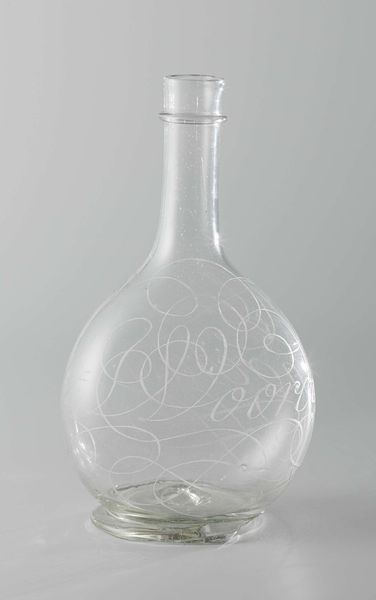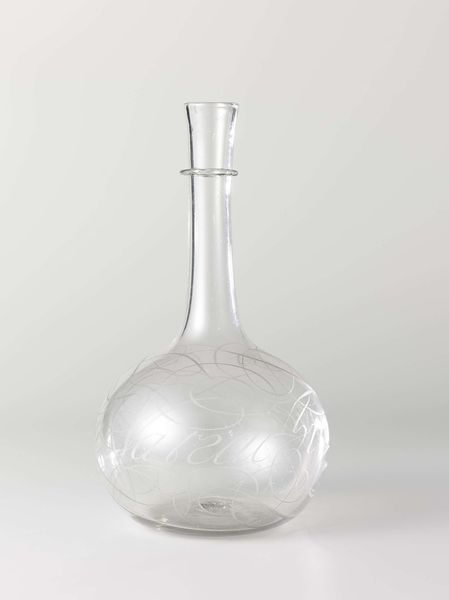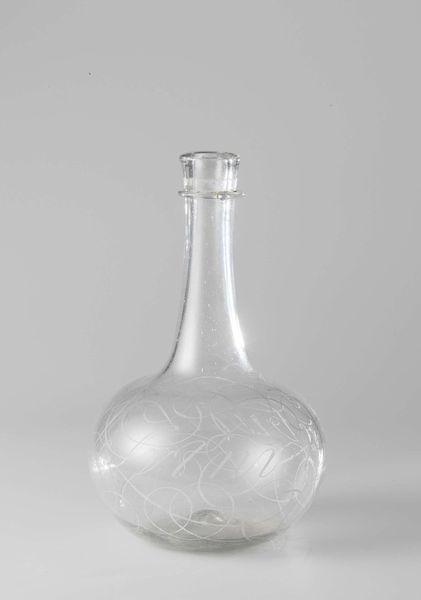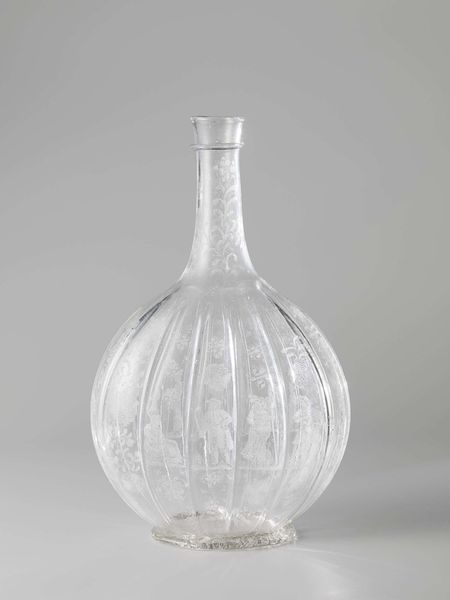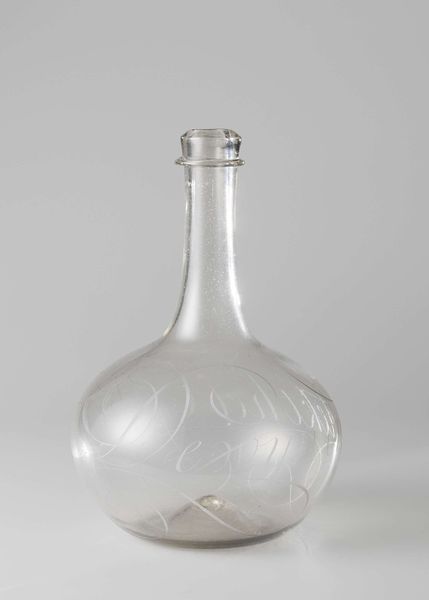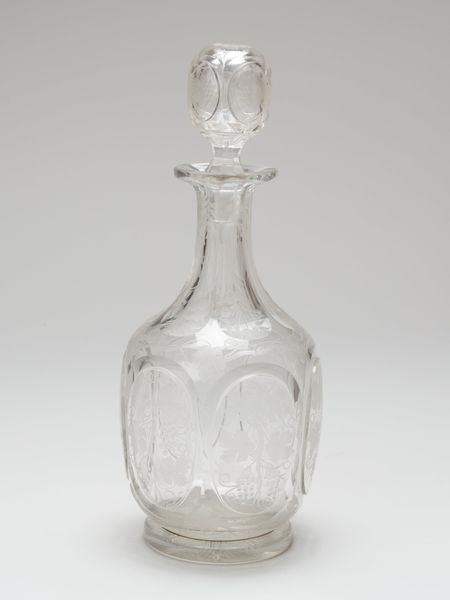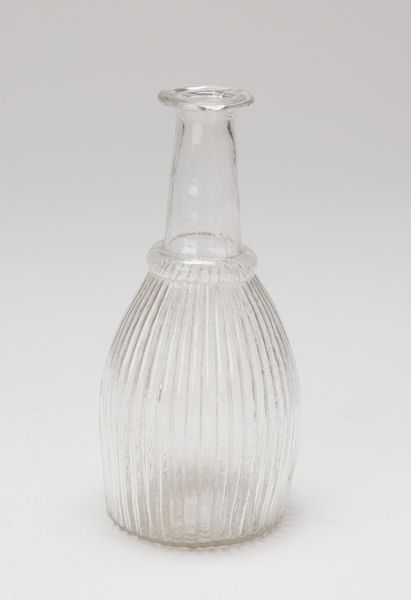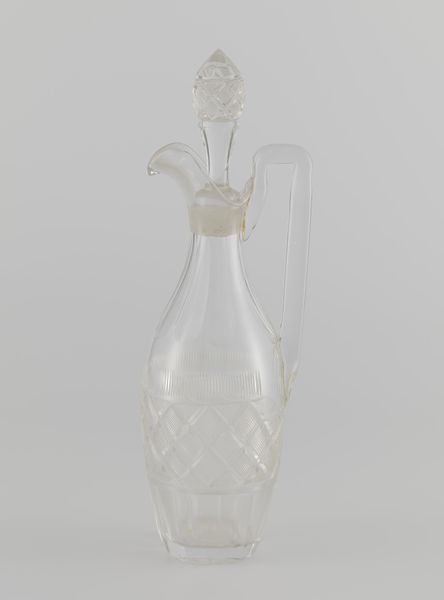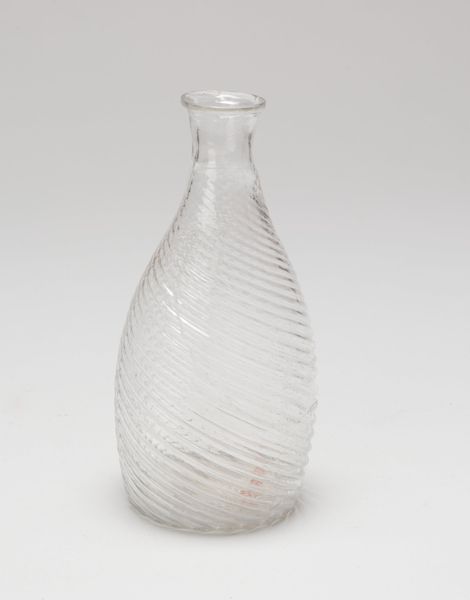
glass
#
baroque
#
glass
Dimensions: height 18.5 cm, width 11.0 cm, depth 7.0 cm
Copyright: Rijks Museum: Open Domain
Curator: I’m struck by the sheer elegance of this object. There’s something so refined and ethereal about its presentation. Editor: Indeed. What we have here is a Baroque glass bottle, estimated to have been crafted between 1675 and 1685. It resides here at the Rijksmuseum. What intrigues me is the societal context surrounding its production. The Baroque period saw an increased demand for luxury goods. How accessible would this level of glassware be, at that time? Curator: I see it from a slightly different perspective. Looking at the material itself - glass - is important. The anonymous artist, most likely working as part of a wider artisanal enterprise, harnessed its translucence beautifully. This wasn't just functional, it was also a statement about craftsmanship, its swirling decoration transforming everyday labour. Editor: And its utility, of course, shaped its status as a prized item, no? Wine and spirits were essential parts of trade, commerce, and social practices during that period, playing into larger trends and affecting both internal markets and colonialism at large. Was it made for just a domestic purpose or does it potentially link into international supply chains and broader market influences? Curator: I agree completely. This specific type of decoration, it is all about display, performance, and almost a boast of one's social rank and material possibilities. It underscores how art wasn’t separate from everyday life, it was enmeshed. Consider its use for wine, perhaps. Drinking vessels carry narratives related to festivity, gathering and celebration, or their lack in certain circumstances, of course! Editor: Absolutely. When assessing such an object we are obliged to recall what it signifies beyond simple materials. Who owned this bottle and how was its possession viewed through period social lenses? Does it tell tales of opulence or, more interestingly perhaps, of ambition and the societal structures around acquiring items for prestige? Curator: It's a complex piece, both deeply material and incredibly suggestive. To think this seemingly humble object embodies layers of human experience and societal dynamics – it’s quite striking. Editor: Agreed, this 'Bottle' has led us on a captivating trip through glassblowing production processes and also high-society consumerism of centuries ago. A delicate vessel through which we can explore trade networks and baroque culture simultaneously.
Comments
rijksmuseum about 2 years ago
⋮
The inscription, which translates as ‘When wine enters, reason departs’, warns of the consequences of over indulgence. Van Heemskerk kept this bottle in his own possession, together with a large portion of his work. His glass collection remained in the family well into the 18th century and was auctioned in Leiden in 1771.
Join the conversation
Join millions of artists and users on Artera today and experience the ultimate creative platform.
